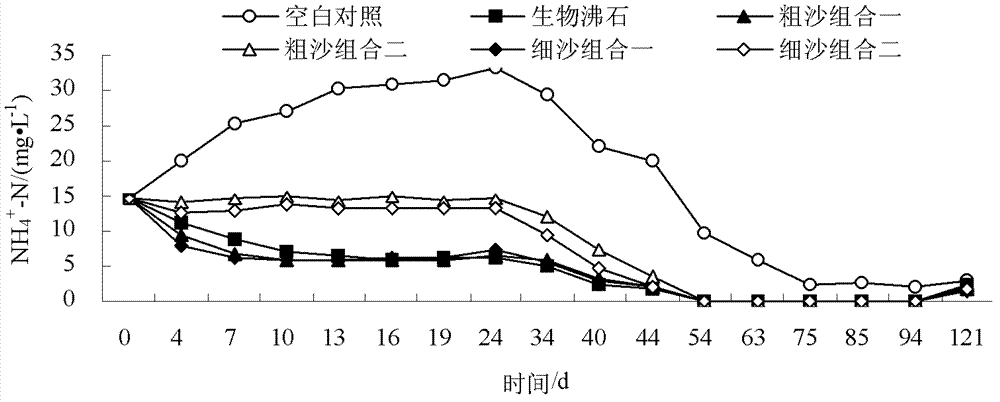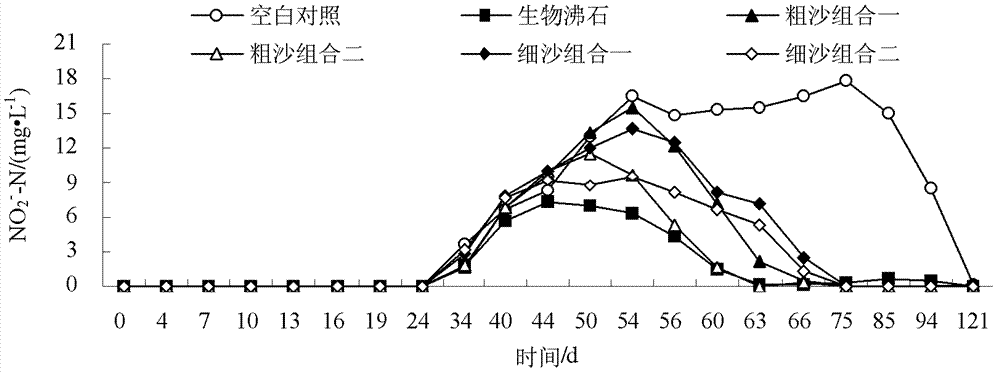Bioactive multilayer covering remediation method for contaminated sediment
A multi-layer covering and biologically active technology, applied in the field of water treatment, can solve the problems of water body biome structure destruction, loss of functional ability, water body pollution, etc., and achieve the effects of enhancing long-term effectiveness, reducing technology costs, and reducing operating costs
- Summary
- Abstract
- Description
- Claims
- Application Information
AI Technical Summary
Problems solved by technology
Method used
Image
Examples
Embodiment Construction
[0017] The high-efficiency strains that the present invention relates to screening are nitrifying bacteria SY1 (Pseudomonas SY1) and denitrifying bacteria HY1 (Pseudomonas HY1) screened from the bottom mud of Heihe Reservoir. These two strains were produced on August 24, 2009 It was preserved in the China Center for Type Culture Collection, referred to as CCTCC, and registered in the register. The biological strain was preserved for 30 years from August 24, 2009. Among them, the preservation number of nitrifying bacteria Pseudomonas sp.SY1 (Pseudomonas sp.SY1) is: CCTCCNO: M 209181;
[0018] The biologically active multi-layer covering technology for repairing polluted deposits of the present invention adopts covering materials that are river sand and biologically active covering materials, namely natural zeolite (called biological zeolite) that fixes high-efficiency nitrifying bacteria and denitrifying bacteria, and the covering method is biological zeolite Below, the river s...
PUM
| Property | Measurement | Unit |
|---|---|---|
| particle diameter | aaaaa | aaaaa |
| particle diameter | aaaaa | aaaaa |
| strength | aaaaa | aaaaa |
Abstract
Description
Claims
Application Information
 Login to View More
Login to View More - R&D
- Intellectual Property
- Life Sciences
- Materials
- Tech Scout
- Unparalleled Data Quality
- Higher Quality Content
- 60% Fewer Hallucinations
Browse by: Latest US Patents, China's latest patents, Technical Efficacy Thesaurus, Application Domain, Technology Topic, Popular Technical Reports.
© 2025 PatSnap. All rights reserved.Legal|Privacy policy|Modern Slavery Act Transparency Statement|Sitemap|About US| Contact US: help@patsnap.com



